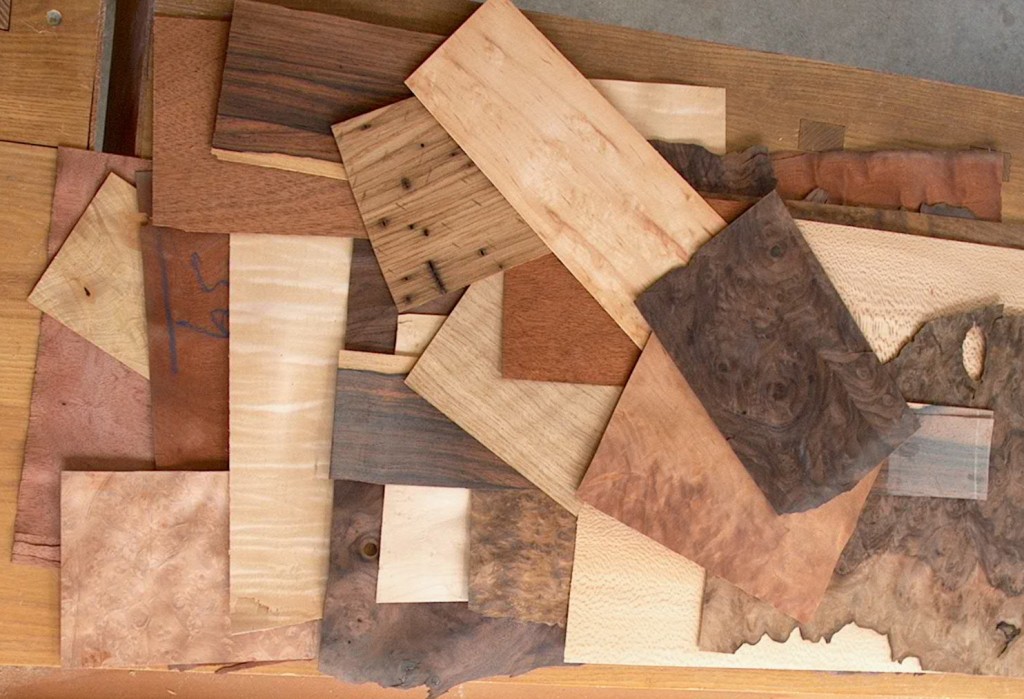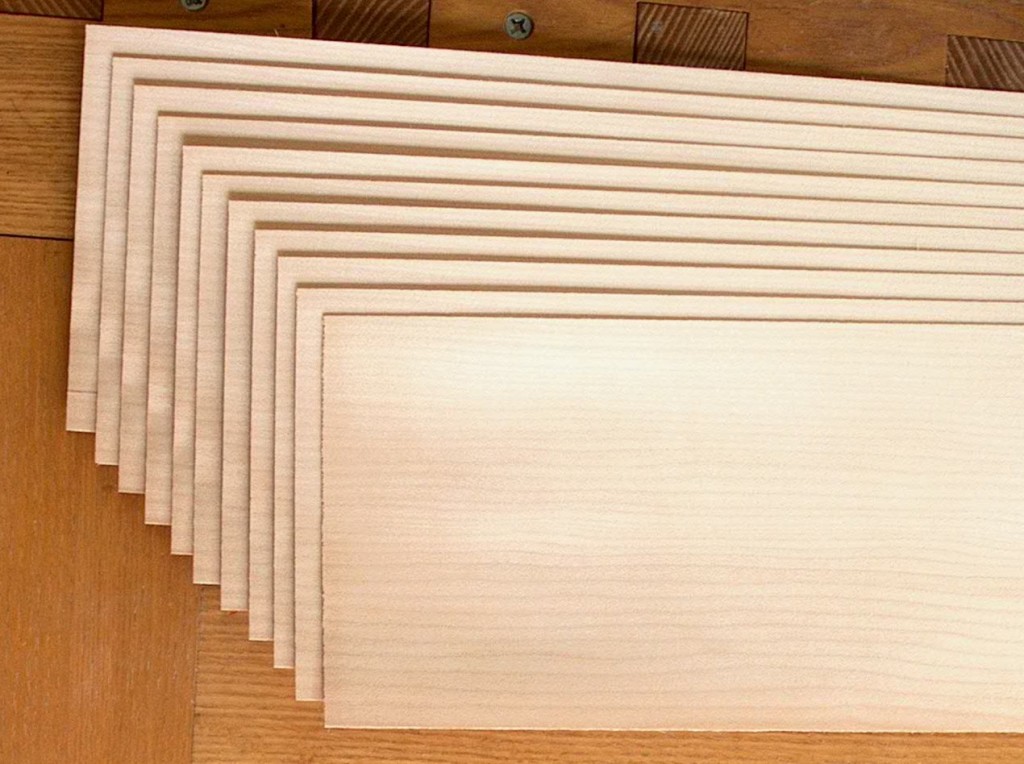 One of the benefits of veneer is the seemingly endless variety of textures, grain patterns, colors, and figures.
One of the benefits of veneer is the seemingly endless variety of textures, grain patterns, colors, and figures.
This collection of samples includes quarter sliced and flat sliced grain patterns; a piece sliced from a wormy log; burl, crotch, waterfall and mottle figures; and a wide range of colors.
Commercially produced veneer is sliced from a solid piece of wood, conceptually like the meat slicer in a delicatessan, so there is no waste. The bottom surface of one slice of veneer is an exact copy of the top surface of the next slice.
Some of the solid wood from which these veneers were sliced are too unstable to be used as solid wood – they would undergo too much seasonal expansion and contraction, and sometimes warping, to be incorporated in furniture. Additionally, burls, which are roundish growths sometimes seen on the side of a tree, are very decorative but small – several consecutive slices often are brought together edge to edge to create the needed length and width.
 From initial slicing to a distributor and on to the end purchaser, veneer is always kept in sequence. This picture one end of eleven sequential sheets of quarter sliced maple veneer, each about 110″ x 5 1/2″.
From initial slicing to a distributor and on to the end purchaser, veneer is always kept in sequence. This picture one end of eleven sequential sheets of quarter sliced maple veneer, each about 110″ x 5 1/2″.
In use, veneer must be glued to a backer or substrate as it is too thin to have any strength of its own. But it offers an amazing design range for custom furniture.
There are several commercial suppliers of veneer. The one I’m most familiar with, www.certainlywood.com, has its complete inventory in pictures on line under their “Wood Menu” tab for anyone who would like to see more of the woods, figures and colors that are available.
